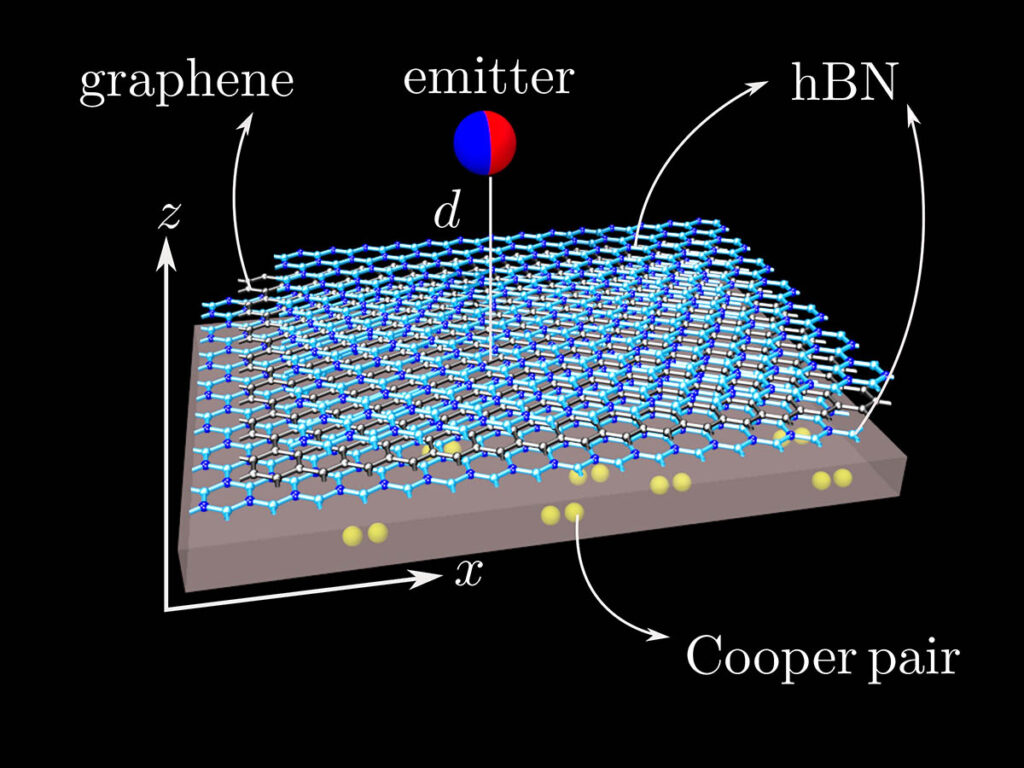An international team led by Nuno Peres, from the Physics Center at the University of Minho and INL School of Sciences, found that the use of graphene allows us to shed light on the “hidden” behavior of superconducting materials, which are associated with many of the new quantum technologies.
The study was published at PNAS - PRoceeedings of the National Academy of Sciences, considered the most prestigious generalist scientific journal after the Science and Nature. It was at PNAS that, in 2005, the isolation of several two-dimensional materials (such as graphene) was announced by Andre Geim and Konstantin Novoselov, both winners of the 2010 Nobel Prize in Physics.
The present work also involved the INL – International Iberian Nanotechnology Laboratory, the universities of Southern Denmark, Technical Denmark and Columbia (USA), the Science and Technology Institute of Barcelona (Spain), and had the support of the consortium Graphene Flagship of the European Commission.
Most of the electrical energy we generate and transport has associated losses due to the electrical resistance of conductors (such as copper) where electrical current flows, dissipating as heat. A superconductor, on the other hand, allows electrical current to flow through it without electrical resistance. Superconductors are subject to complex phenomena.
Perhaps the best known example is its use in the levitation of high-speed trains, whose base is cooled to very low temperatures and, when interacting with the strong magnets of the rails, it floats and can reach speeds in the order of 500 km/h .
Other physical effects of superconductors are elusive and not easily observable because, for example, they do not interact directly with light (electromagnetic radiation). One of these "invisible corners" is the Higgs mode, an "oscillation in the density of charge-carrying pairs" in superconductors.

Nanoscale Discovery
Now, it has been discovered that graphene can help shed light on this “dark corner” of the physics of some types of superconductors. Graphene is a carbon monolayer (one atom thick) obtained from graphite (we see it on the tip of the pencil), being very light, flexible, resistant and a good electrical conductor.
This profile allows you to guide collective oscillations of electrical charge that interact with light (called plasmons), similarly to electrons in metal, but extremely efficiently, intensely and at the nanoscale, as part of the team responsible for this article in PNAS had demonstrated in the magazine Science in 2018 e in 2020.
In this new work, scientists studied how such oscillations in graphene's “electron sea” interact with pairs of electrons in a superconductor placed a few nanometers away. To this end, they deposited a graphene sheet encapsulated in hexagonal boron nitride on top of this superconductor.
The Higgs mode was thus detected by the way in which the energetic landscape of electrical charge oscillations in graphene was modified by the presence of the superconductor. It was this coupling that allowed us to “see” the elusive phenomenon.
In this Higgs mode, the superconductor undergoes intense "electron pair density fluctuations" that change the way electrons collectively behave in graphene.
The paper also suggests that combining light-matter interaction at the nanoscale, evolving strongly correlated matter, can help to understand the fundamental physics behind the phenomena that govern materials at that scale.
This knowledge is essential for the development of new quantum technologies. Entitled "Harnessing ultraconfined graphene plasmons to probe the electrodynamics of superconductors”, the work also includes, among the six authors, the Portuguese Paulo André Gonçalves, who is an alumnus of the degree in Physics at the University of Minho and a postdoctoral researcher in Denmark.
Science in the Regional Press – Ciência Viva



















Comments